|
Search, browse, and study this dictionary to learn more about the early American, Christian language. 
 1828.mshaffer.com › Word [tree]
1828.mshaffer.com › Word [tree]
TREE, n. 1. The general name of the largest of the vegetable kind, consisting of a firm woody stem springing from woody roots, and spreading above into branches which terminate in leaves. A tree differs from a shrub principally in size, many species of trees growing to the highth of fifty or sixty feet, and some species to seventy or eighty, and a few, particularly the pine, to a much greater highth.Trees are of various kinds; as nuciferous, or nut-bearing trees; bacciferous, or berry-bearing; coniferous, or cone-bearing, &c. Some are forest-trees, and useful for timber or fuel; others are fruit trees, and cultivated in gardens and orchards; others are used chiefly for shade and ornament.2. Something resembling a tree, consisting of a stem or stalk and branches; as a genealogical tree.3. In ship-building, pieces of timber are called chess-trees, cross-trees, roof-trees, tressel-trees, &c.4. In Scripture, a cross. --Jesus, whom they slew and hanged on a tree. Act.10.5. Wood.
|
Evolution (or devolution) of this word [tree]
| 1828 Webster | 1844 Webster | 1913 Webster |
|---|
TREE, n. 1. The general name of the largest of the vegetable kind, consisting of a firm woody stem springing from woody roots, and spreading above into branches which terminate in leaves. A tree differs from a shrub principally in size, many species of trees growing to the highth of fifty or sixty feet, and some species to seventy or eighty, and a few, particularly the pine, to a much greater highth.Trees are of various kinds; as nuciferous, or nut-bearing trees; bacciferous, or berry-bearing; coniferous, or cone-bearing, &c. Some are forest-trees, and useful for timber or fuel; others are fruit trees, and cultivated in gardens and orchards; others are used chiefly for shade and ornament.2. Something resembling a tree, consisting of a stem or stalk and branches; as a genealogical tree.3. In ship-building, pieces of timber are called chess-trees, cross-trees, roof-trees, tressel-trees, &c.4. In Scripture, a cross. --Jesus, whom they slew and hanged on a tree. Act.10.5. Wood. |
TREE, n. [Sax. treo, treow; Dan. træ; Sw. trä, wood, and träd, a tree; Gr. δρυς; Slav. drevo; Sans. druh, or drus. Qu. W. dar, an oak; Sans. taru, a tree. It is not easy to ascertain the real original orthography; most probably it was as in the Swedish or Greek.]- A plant whose stem or stock is woody, branched and perennial, and above a certain size. Trees and shrubs differ only in size, and there is no absolute limit between them. When a plant of the above description is more than eight or ten feet high and not climbing, it is generally called a tree. When it is less than this it is called a shrub; but there are many exceptions to this, on both sides.
Trees are of various kinds; as, nuciferous, or nut-bearing trees; bacciferous, or berry-bearing; coniferous, or cone-bearing, &c. Some are forest-trees, and useful for timber or fuel; others are fruit-trees, and cultivated in gardens and orchards; others are used chiefly for shade and ornament.
- Something resembling a tree, consisting of a stem or stalk and branches; as, a genealogical tree.
- In ship-building, pieces of timber are called chess-trees, cross-trees, roof-trees, tressed-trees, &c.
- In Scripture, a cross.
Jesus, whom they slew and hanged on a tree. Acts x.
- Wood. [Obs.] Wick.
TREE, v.t.To drive to a tree; to cause to ascend a tree. A dog trees a squirrel. |
Tree
- Any perennial woody plant of
considerable size (usually over twenty feet high) and growing with a single
trunk.
- To drive to a tree] to cause to
ascend a tree; as, a dog trees a squirrel.
- Something constructed in the form of, or
considered as resembling, a tree, consisting of a stem, or stock, and
branches; as, a genealogical tree.
- To place upon a tree; to fit with a tree; to
stretch upon a tree; as, to tree a boot. See Tree,
n., 3.
- A piece of timber, or something commonly made of
timber; -- used in composition, as in axletree, boottree,
chesstree, crosstree, whiffletree, and the
like.
- A cross or gallows; as Tyburn
tree.
- Wood; timber.
- A mass of crystals, aggregated in
arborescent forms, obtained by precipitation of a metal from solution. See
Lead tree, under Lead.
|
| 1828 Webster | 1844 Webster | 1913 Webster |
|---|
Thank you for visiting!
- Our goal is to try and improve the quality of the digital form of this dictionary being historically true and accurate to the first American dictionary. Read more ...
- Below you will find three sketches from a talented artist and friend depicting Noah Webster at work. Please tell us what you think.
Divine Study
 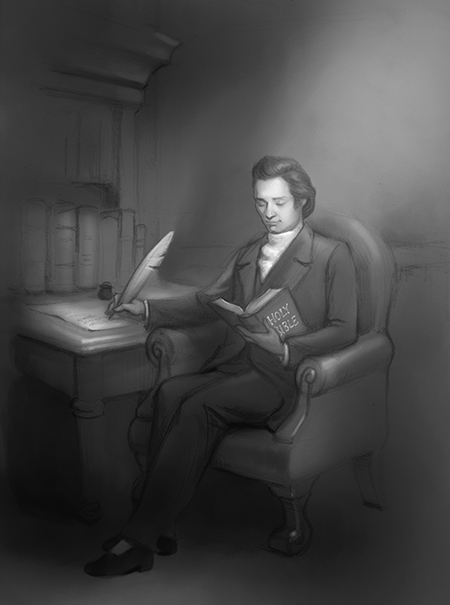
Divine Study
|
Window of Reflection
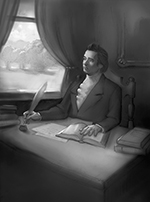 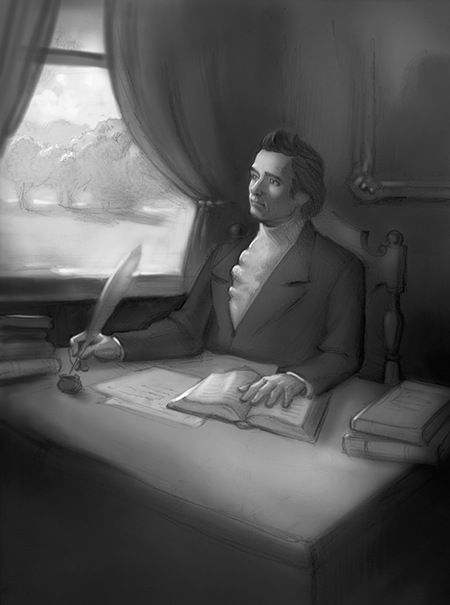
Window of Reflection
|
Enlightening Grace
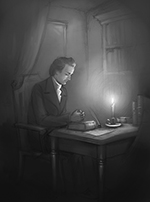 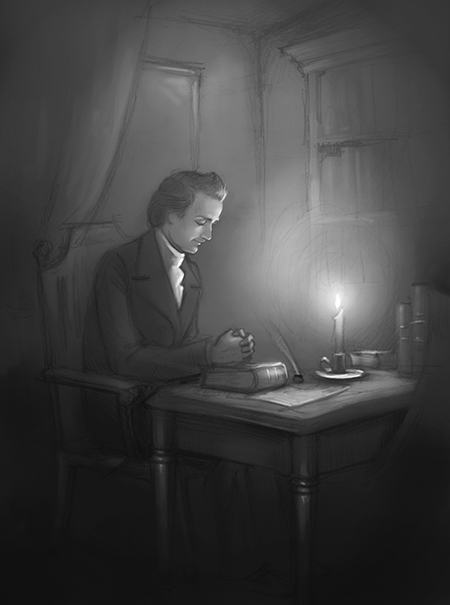
Enlightening Grace
|
160
|
937 |
113
|
1020 |
186
|
1053 |

Tree TREE, noun 1. The general name of the largest of the vegetable kind, consisting of a firm woody stem springing from woody roots, and spreading above into branches which terminate in leaves. A tree differs from a shrub principally in size, many species of trees growing to the highth of fifty or sixty feet, and some species to seventy or eighty, and a few, particularly the pine, to a much greater highth. TREEs are of various kinds; as nuciferous, or nut-bearing trees; bacciferous, or berry-bearing; coniferous, or cone-bearing, etc. Some are forest-trees, and useful for timber or fuel; others are fruit trees, and cultivated in gardens and orchards; others are used chiefly for shade and ornament. 2. Something resembling a tree consisting of a stem or stalk and branches; as a genealogical tree 3. In ship-building, pieces of timber are called chess-trees, cross-trees, roof-trees, tressel-trees, etc. 4. In Scripture, a cross. --Jesus, whom they slew and hanged on a tree Acts 10:39. 5. Wood. TREE'-FROG, noun [tree and frog.] A species of frog, the Rana arborea, found on trees and shrubs; called by the older writers, Ranunculus viridis. |

|
| Hard-cover Edition |
368 |
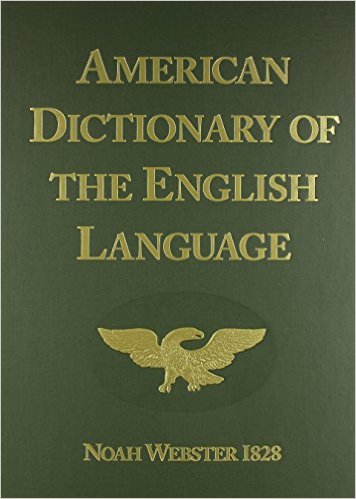 |
543 |
|
| Compact Edition |
353 |
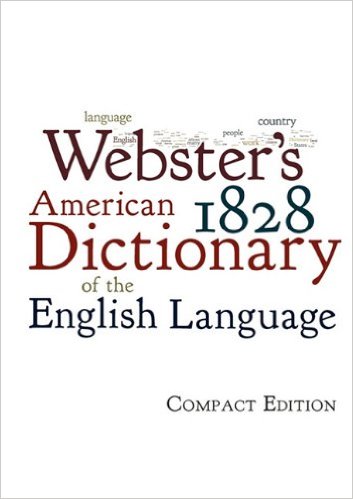 |
242 |
|
| CD-ROM |
303 |
 |
192 |
|
* As a note, I have purchased each of these products. In fact, as we have been developing the Project:: 1828 Reprint, I have purchased several of the bulky hard-cover dictionaries. My opinion is that the 2000-page hard-cover edition is the only good viable solution at this time. The compact edition was a bit disappointing and the CD-ROM as well. |
| [ + ] |
| Add Search To Your Site |
|
|
|
 1828.mshaffer.com › Word [tree]
1828.mshaffer.com › Word [tree]
